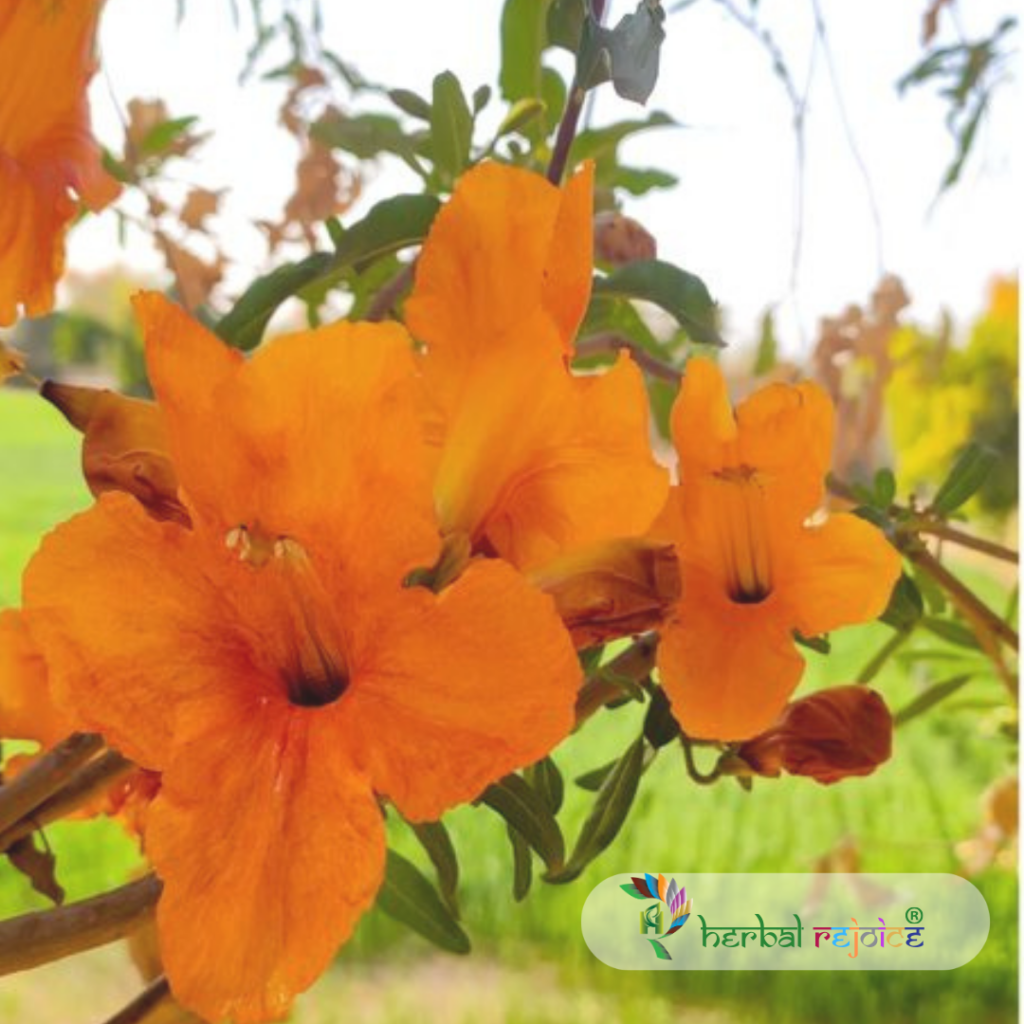Introduction
Tecomella undulata, also known as Rohida Tree, is a plant species belonging to the Bignoniaceae family. It can be found in North-West and Western India, as well as in the outer Himalayas. In Ayurvedic medicine, it is known by various names such as Rohitaka, Rohi, Daadimpushpaka, Daadimchhada, and Plihaghna.
Threauptic Properties
The bark of the Rohida tree is known for its medicinal properties. It has been traditionally used as a relaxant, cardiotonic, and choleretic. However, it is important to note that the heartwood of the tree is toxic due to the presence of lapachol. The bark is commonly used in the treatment of leucorrhoea, liver and spleen diseases, leucoderma, syphilis, and other skin diseases.
Components of Tecomella undulata
Various chemical compounds have been identified in the bark of Tecomella undulata. These include tecomin (veratryl beta-D-glucoside), alkanes, alkanols, and beta-sitosterols. Additionally, the bark is also a source of chromone glycosides, such as undulatosides A and B, and iridoid glucosides, including tecomelloside and tecoside. Lapachol, veratric acid, and dehydrotectol are among the other compounds found in the bark.

Studies have shown that the water-soluble portion of both the alcoholic and chloroform extracts of the bark exhibits smooth muscle relaxant, mild cardiotonic, and chloretic activities. This further validates the traditional use of the Rohida tree bark in treating various ailments.
Dosage
When using Tecomella undulata for medicinal purposes, a decoction of the flower or bark is commonly prepared. The recommended dosage is 50-100 ml of the decoction, as suggested by the Central Council for Research in Ayurvedic Sciences (CCRAS).
Conclusion
In conclusion, Tecomella undulata, also known as Rohida Tree, is a plant species that holds significant medicinal value. Its bark possesses relaxant, cardiotonic, and choleretic properties, making it useful in the treatment of various ailments such as leucorrhoea, liver and spleen diseases, leucoderma, syphilis, and skin diseases. It contains several bioactive compounds that contribute to its therapeutic effects. When using this plant for medicinal purposes, it is recommended to prepare a decoction of the flower or bark.
Frequently Asked Questions
What is Tecomella undulata?
Tecomella undulata, also known as Rohida Tree, is a plant species belonging to the Bignoniaceae family.
Where can Tecomella undulata be found?
Tecomella undulata can be found in North-West and Western India, as well as in the outer Himalayas.
What are the medicinal properties of the bark of the Rohida tree?
The bark of the Rohida tree is known for its relaxant, cardiotonic, and choleretic properties.
Can the heartwood of the Rohida tree be used for medicinal purposes?
No, the heartwood of the Rohida tree is toxic due to the presence of lapachol.
What conditions can the bark of the Rohida tree be used to treat?
The bark of the Rohida tree can be used in the treatment of leucorrhoea, liver and spleen diseases, leucoderma, syphilis, and other skin diseases.
What chemical compounds have been identified in the bark of Tecomella undulata?
The bark of Tecomella undulata contains tecomin, alkanes, alkanols, beta-sitosterols, undulatosides A and B, tecomelloside, tecoside, lapachol, veratric acid, and dehydrotectol.


